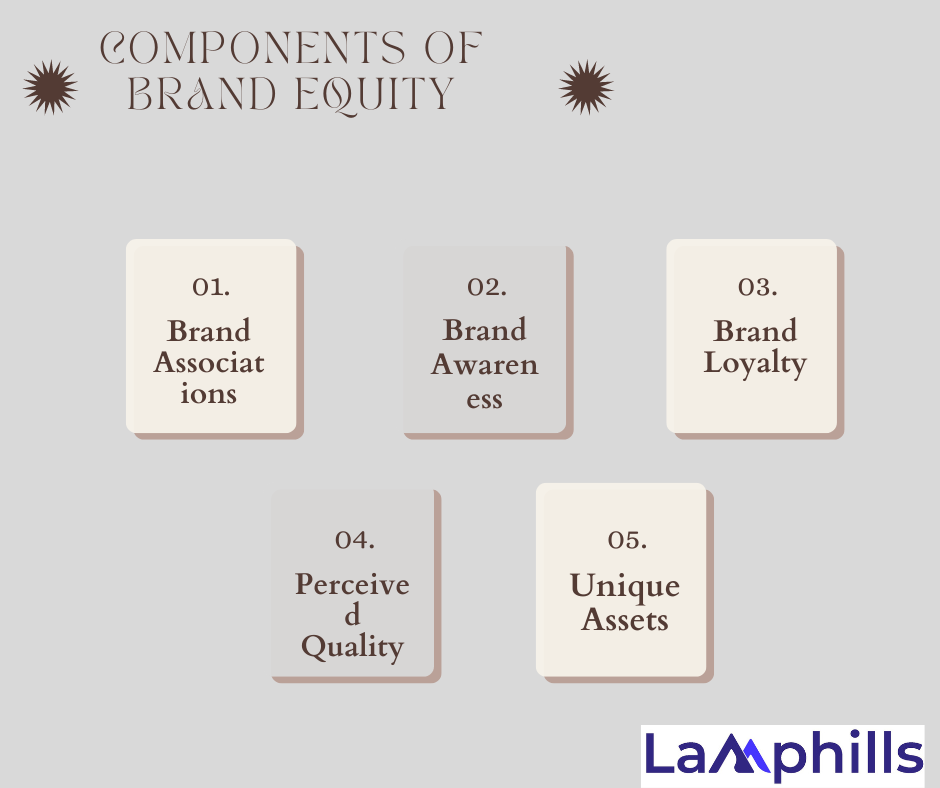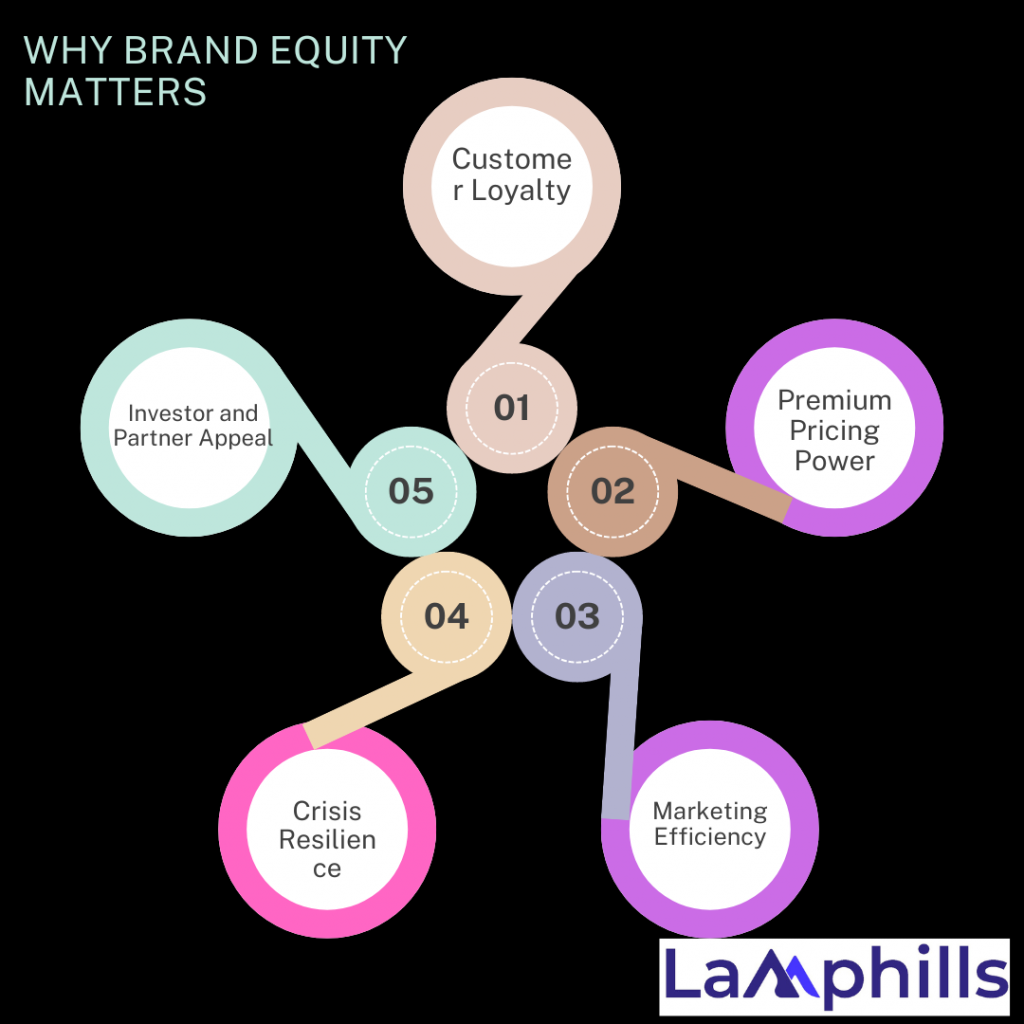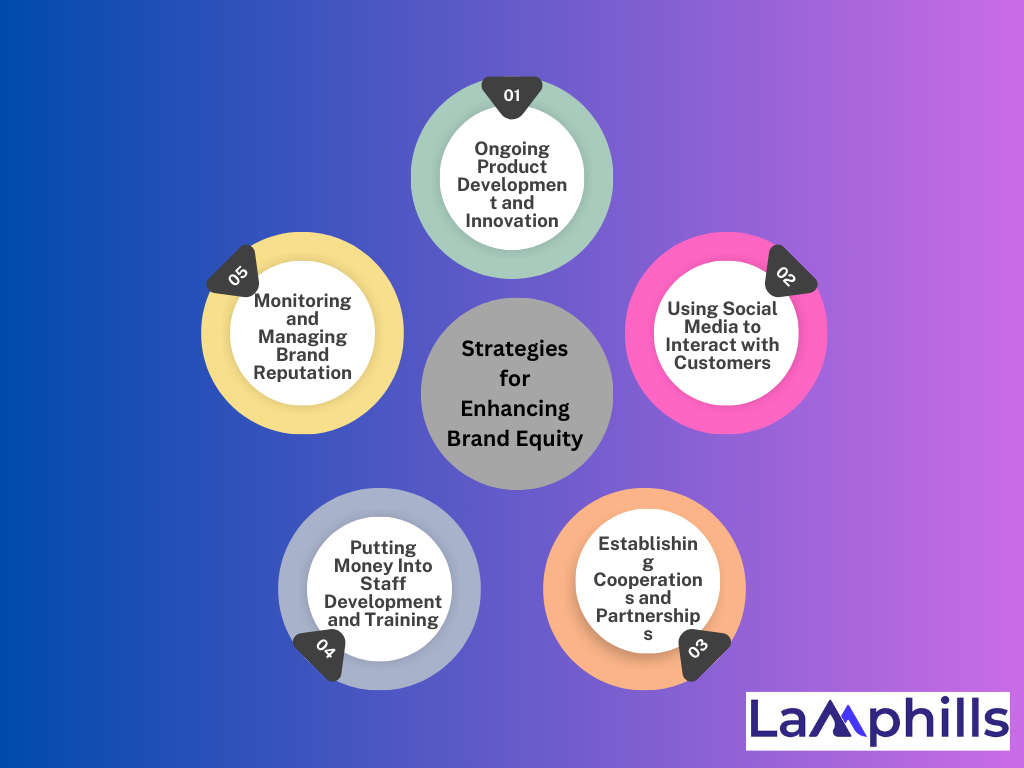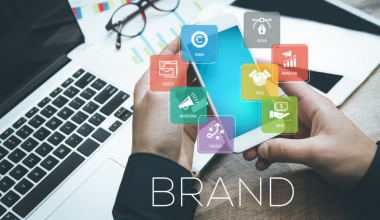I remember walking into a grocery shop to get some cereal. My eyes swept the shelves, and I was presented with an endless list of options. There were well-known brands, such as Kellogg’s, General Mills, and Quaker, as well as the lesser-known ones. Despite knowing that I could save money by purchasing store-brand cereal, I reflexively reached for my favorite: Kellogg’s Frosted Flakes. It wasn’t simply the taste; it was also the memories, trust, and sense of comfort that it brought. This, I eventually learned, was brand equity in action.
To be honest, in today’s competitive business sector, standing out is critical. You could have the best product or service in the world, but if no one knows or remembers your brand, it’s like a buried jewel that no one gets to enjoy. That’s where brand equity comes in: it’s a process that elevates your brand from a label on a shelf to a trusted friend (or at least a nice face) that people actively seek out.
See it as the unseen strength of your brand: the more powerful it is, the more power it has to draw in clients, foster a sense of loyalty, and eventually lead to success. Now, you must be wondering, what precisely is brand equity, and why it is important to you as a business owner. I will explain what brand equity is, look at its advantages, compile a list of its elements, and show you how to create one.
Key Points
- Brand equity is more than just brand awareness. It’s the sum of people’s positive associations and emotions with your brand.
- Building brand equity requires a multi-pronged approach. Establish a clear brand identity, ensure consistent messaging, deliver exceptional customer experiences, and create emotional connections with your audience.
- Track your progress and adapt your strategies. Use quantitative metrics (brand valuation, market share) and qualitative measures (customer surveys, brand perception studies) to understand your brand’s health and make data-driven decisions.
- Building brand equity is an ongoing process. So, continuously innovate, engage with your audience, invest in your employees, and monitor your reputation to maintain a strong brand over time.
What is Brand Equity?
Literally, brand equity is the value of a brand, determined by the consumer’s perception of its quality and desirability. It is based on factors such as the brand’s recognition, customer loyalty, and customer satisfaction
Brand equity is similar to the reputation your brand has. It is the value derived from customers’ recognition, trust, and loyalty to your products or services. This is why I chose Kellogg’s over a cheaper alternative. A brand with high equity does more than just sell items; it builds relationships with its customers.
In other words, the value added to a product offered by a well-known brand name is what truly constitutes brand equity. Based on my encounters, I have come to define brand equity as the result of all the favorable connections and opinions that consumers have about a particular company or brand.
Understanding Brand Equity

Image by lemontreemarketing.com.
If I ask you to name a sneaker brand, the possibility of you saying Nike or Adidas is 70%. This is because these brands have worked hard for years to establish a name that people recognize and trust. As a result, companies can charge a higher price for their products, and customers are more inclined to choose them even when cheaper options are available. According to a Nielsen survey, roughly 59% of consumers are willing to pay more for trusted brands. That is a significant development!
Brand equity is about more than just logo familiarity. It is the culmination of everyone’s positive perceptions and emotions about your organization. It’s the confidence you instill, the experiences you have, and the reputation you’ve established. Consider it your brand’s unseen currency; the more valuable it is, the greater your influence in the business.
Before now, I was a passionate devotee of a particular brand of sports shoes. Most importantly, their shoes felt great during my runs, and their stores were slick and current. Their advertising was always encouraging. Although their brand experience cost more than others, I thought it was worthwhile. This is the strength of brand equity – it allows you to command a premium price because you’ve built such a strong emotional connection with your customers.
Put differently, brand equity is a measure of your brand’s true value based on how well it serves your purpose and achieves your objectives, rather than just its market value. Not only may targeted branding initiatives boost sales, but there’s also a general chance that a certain buyer will select you over your competitors.
Components of Brand Equity

As more and more of your customers become personally aware of your brand, brand equity is developed. Before developing either a favorable or bad view of it based on their own experiences, they must first be aware of its existence. Afterward, they must come to a subconscious value that they identify with your brand.
Thus, building brand equity contributes to the overall health of your brand. Customer loyalty increased significantly over time as individuals started to trust and relate to the ideals of my business, I discovered. Alright, so what precisely is it of brand equity made of? Here’s the breakdown:
#1. Brand Associations
These are the feelings and ideas people have about your brand. When I think of Apple, I think of innovation and sleek design. Those are strong brand associations.
Brand associations include everything that customers relate to with a brand, including emotional, functional, and social factors. These associations may be positive or negative, and they ultimately shape the company’s image. Think about Apple – they’re not just selling computers, they’re selling innovation, sleek design, and a user-friendly experience.
#2. Brand Awareness
This is about how well people know your brand. When I think of fast food, McDonald’s is the first thing that comes to mind. Customers’ level of recognition or familiarity with a brand is known as brand awareness, sometimes known as brand salience. Increased brand awareness usually translates into a customer thinking of a certain product first and making a purchase.
#3. Brand Loyalty
Consumers who are loyal to a brand are likely to make repeated purchases from businesses they respect and believe in. This gives the business stability and a sizable market share. when clients actively select you over rivals in addition to just knowing who you are. Consider your preferred coffee establishment. Even though you are aware that there are many other options close by, you find yourself returning because of their welcoming baristas, warm atmosphere, and expertly prepared lattes. That’s the commitment to a brand!
#4. Perceived Quality
Client perception of a brand, especially concerning the caliber of its merchandise and customer support, is reflected in perceived quality. Customers who are willing to pay a greater price are typically those who have a good perceived quality. This demonstrates the client’s confidence in your brand’s overall superiority. Customer service, user experience, and brand image are all important factors to consider in addition to the product itself.
#5. Unique Assets
Intangible assets of the brand that strengthen the bonds between the parties without bringing in money are considered proprietary assets. Intellectual property rights, trademarks, copyrights, and patents are a few examples of assets.
bear in mind that combining all of these resources will guarantee that your brand is constantly consumer-focused, which will help you keep devoted following in life. With overall consumer perception being one of the most powerful components of developing positive brand equity, your current and potential customers must think highly of your brand and its products.
Why Brand Equity Matters

Businesses can benefit greatly from having strong brand equity. When a brand is well-regarded, consumers are more likely to purchase from it and even promote it to others. According to a Bain & Company study, a 5% improvement in client retention can result in a 25-95% increase in profitability. That’s huge! And it’s no surprise that businesses put so much emphasis on developing a good brand.
Brand equity is the secret sauce that may take your company to new heights; it’s more than simply a catchphrase. I know firsthand from my own experience how a great brand can increase revenue, build customer loyalty, and ultimately propel business expansion. Here are just a few additional reasons why it matters:
#1. Customer Loyalty
Strong brand equity promotes passionate client loyalty. People become emotionally invested in your brand, resulting in repeat purchases and excellent word-of-mouth marketing.
#2. Premium Pricing Power
Customers will pay extra for your items or services if they believe your brand is of high quality and trustworthy.
#3. Marketing Efficiency
A strong brand increases the effectiveness of your marketing activities. People are already connected with you and open to your messages.
#4. Crisis Resilience
A well-established brand can withstand storms more easily. Customers who have a strong emotional connection to your brand are more willing to overlook a mistake.
#5. Investor and Partner Appeal
A powerful brand appeals to investors and potential partners, making it easier to obtain funds and collaborate.
Building Effective Brand Equity
So, how do you build brand equity? Here are some things I’ve noticed that work:
Take a page from the strategy of companies like Apple and Nike, which have mastered the art of creating brand equity. They’ve built companies that connect with customers on an emotional level through inventive products, compelling storytelling, and consistent branding.
So, how do you build brand equity? In my experience, it begins with,
#1. Determining Your Values and Brand Identity
- Recognize Yourself
Establish your brand’s mission statement, key values, and unique selling proposition (USP) first. Your actions will be shaped by these guiding principles in every way. Think of what distinguishes your brand: is it your innovative strategy, your devotion to sustainability, or your commitment to providing outstanding customer service?
- Be the Unapologetic You
Create a visual identity, voice, and personality for your brand that are all consistent. Are you gregarious and lighthearted or refined and graceful? What sound and appearance do you desire for your brand? Make sure this is reflected on all platforms, including your website and social media accounts. The secret is to be consistent!
Take TOMS shoes, for instance. With every transaction, they provide a pair of shoes to a child in need as part of their “One for One” business strategy, which is based on their fundamental value of social responsibility. They have a friendly and informal brand language, and their images are full of vivid colors and real people. Each component strengthens their individuality.
#2. Connecting with Your Target Audience: Knowing Your Tribe
Assume you are a retailer of high-quality athletic clothing. An audience that values quality and innovation could be fitness enthusiasts. So, work with fitness influencers who they follow to provide material that showcases motivational workout regimens. Thus,
- Make Research
Without knowing who you’re interacting with, creating lasting relationships is impossible. To comprehend the psychographics, purchasing patterns, and demographics of your target market, conduct in-depth market research. What goals, needs, and desires do they have?
- Talk in Their Language
Create experiences and messaging that speak to your target. Make sure your communication style, graphics, and content are all tailored to their tastes. Think of your brand like a person. You wouldn’t think they’d show up in a suit one day and put on pajamas the next? Consistency is key! Make sure your messaging, visuals, and brand voice are consistent across all platforms, from your website to your social media presence.
#3. Delivering Exceptional Customer Experiences: Building Bridges of Loyalty
If you provide excellent customer service and high-quality products, people will always remember. I had an amazing experience at a local coffee shop once—the barista remembered my name and my favorite drink. I became a regular customer because of that personal touch.
- Encourage a Community
Build a sense of belonging for your brand. Organize events, promote social media consumer connections, and provide loyalty programs that reward recurring business. Give your clients the impression that they are valued club members.
For instance, the outdoor clothing company Patagonia is renowned for its dedication to both customer service and environmental activism. To promote sustainability, they hold repair workshops and provide a lifetime guarantee on their items. By constantly interacting with their clients on social media and environmental problems, they have also developed a devoted following.
#4. Utilizing Effective Marketing Strategies
Marketing is all about getting your brand message out there. Develop targeted campaigns that reach your ideal customers and showcase the value you offer. This could involve social media marketing, content creation, influencer partnerships, or other strategies that align with your brand identity and target audience.
#5. Measuring and Managing Your Brand Equity
Building brand equity is an ongoing process. Just like any valuable asset, it needs to be monitored and managed. Here’s how:
- Recognize Your Numbers
You can monitor important measures, such as customer lifetime value (CLTV), brand awareness, brand perception, and brand loyalty, to gauge the strength of your brand. Customer surveys, social media analytics, and brand audits are a few examples of tools that might yield insightful data.
- consistency
Keep in mind that building a consistent and satisfying customer experience is the foundation of brand equity. Maintain a close eye on your marketing collateral, consumer communications, and overall brand experience to make sure everything stays true to your brand.
- Accept Feedback and Adjust
Never be reluctant to request feedback from your clients. Utilize social media monitoring, polls, and client evaluations to pinpoint areas that want enhancement. Be prepared to modify your brand strategy in response to consumer demands and market developments.
In addition, social media is also a great way to get face time, so to speak, with your actual consumers. For example, Nike has a dedicated Twitter page (NikeService) to respond to consumer needs 24 hours a day in seven languages. Talking directly to, and hearing directly from, consumers can provide invaluable insight into where your brand may be missing the mark, which can then be used for optimizations.
Remember: Building a strong brand equity takes time and effort. But by focusing on these key principles, you can unlock a powerful asset that will drive customer loyalty, growth, and success for your business.
Measuring Brand Equity
It’s important to monitor your brand equity and look for methods to strengthen it after you’ve established it. Businesses can create metrics based on the four Cs of measurable data to quantify brand equity:
#1. Company Data
This contains data on sales income, marketing expenses, and club member revenue. Although encouraging trends are appreciated here, brand equity isn’t necessarily directly correlated with them. Setting benchmarks, such as contrasting current performance with historical data, or focusing on a particular measure, such as sales within a target audience before and after a campaign, are necessary for accurately assessing brand equity.
#2. Consumer Data
Companies can determine brand equity in marketing spend by observing customer purchasing behavior and then comparing that data to attempts to build brand equity. What patterns can be identified by returning customers? Here, analytical tools or software are essential, as is the knowledge to identify significant patterns.
#3. Competitor Data
In general, how are your rivals performing in comparison to you specifically? How do those patterns evolve? The responses to those queries offer a useful starting point for gauging the effectiveness of a business’s investment in brand equity.
#4. Community Data
This step, also known as qualitative measurements, entails monitoring not only current clients but also the target market or audience as a whole. This can involve conducting focus groups with a professional organizer or using techniques like social media polls to gather direct or indirect input.
Strategies for Enhancing Brand Equity

Brand equity isn’t a “build it and forget it” kind of thing. Here are some ways to keep it flourishing:
#1. Ongoing Product Development and Innovation
Never become comfortable! As client needs change, introduce new items or services to keep your offers relevant and novel.
#2. Using Social Media to Interact with Customers
Social networking is an effective tool for establishing connections and encouraging brand loyalty. Maintain an active presence on pertinent platforms, reply to messages and comments, and provide captivating material that appeals to your audience.
#3. Establishing Cooperations and Partnerships
By collaborating with other powerful businesses, you may expand your audience and reach new ones. Work together with businesses that complement your offerings and share your beliefs.
#4. Putting Money Into Staff Development and Training
Employees serve as brand representatives. Invest in educational initiatives to make sure staff members are aware of your brand’s values and are capable of delivering exceptional customer service.
#5. Monitoring and Managing Brand Reputation
In today’s digital age, online reputation matters. Proactively monitor what people are saying about your brand online and address any negative feedback promptly and professionally.
Case Studies: Learning From the Best
Finally, let’s take a look at some real-life examples of brands that have nailed it when it comes to brand equity. Companies like Weightwatchers, and Coca-Cola have built iconic brands that transcend mere products—they’re symbols of culture and identity.
#1. The Coca-Cola Company
Except for North Korea and Cuba, every nation in the globe sells Coca-Cola products, with an estimated value of $271 billion.
As a result, it continuously makes adjustments to fit the needs of its clients. For example, previous products allowed label personalization for younger audiences, Christmas advertisements with Santa dressed in red to celebrate the holidays, and previous taglines that emphasized happy moments were “Make it real” (2005), “Open happiness” (2009), and “Taste the feeling” (2016).
With strong brand equity, a business can expand the range of products it offers under the brand, confident that consumers will be willing to try the new offerings. Coke expanded its product line to do this, and as a result, it now possesses over 20 brands.
#2. WW (formerly Weightwatchers)
I would like to caution those of you who believe it is simple to change your brand. Companies that attempted to implement constructive changes have encountered criticism and hostility in certain instances.
The diet company Weightwatchers then changed its name to “Wellness that Works” in 2008 to put more of an emphasis on overall well-being and self-care, eliminating the word “weight” from the brand.
WW was responding to the times, but as a result of the backlash against their adjustments, its share price suffered and its customers had unfavorable experiences. To regain the lost popularity and knowledge of their brand, WW quickly altered its strategy and became “Weight Watchers Reimagined.”
Finally, through an analysis of the tactics used by these brands, we can gain valuable insights into how to cultivate powerful brand equity.
#3. Apple
In 1997, John Sculley, a former Pepsi CEO who joined Apple, told the Guardian, “People talk about technology, but Apple was a marketing company.” It was the marketing agency of the decade.” In the 1990s, Apple almost went out of business. As Marc Gobe, author of Emotional Branding, stated, “It goes beyond commerce.” This enterprise should have died ten years ago, but people insisted on supporting it.” This support stems from the loyalty of Apple product users, so when Steve Jobs returned to Apple, he had a foundation to build on.
As Simon Sinek stated, “People don’t buy what you do. They buy why you do it.” Many companies tried to make the switch from computers to other products but failed. They had spent the majority of their time highlighting features (for example Gateway was certainly qualified to make flat-screen TVs, but their new products never caught on with the public.) Apple on the other hand focused on the brand and its relationship with the consumer. They dared consumers to challenge the status quo right alongside them, so when they introduced revolutionary products such as the iPod or iPhone, consumers were eager instead of confused.
Benefits of Brand Equity
Here are some potential benefits of brand equity to help you understand its importance:
#1. Creating New Opportunities
If customers appreciate their products, they are likely to buy more from the same firms. This builds trust and a client base, making the company more likely to succeed if it launches new products.
#2. Improving Sales
Products with a strong reputation and perceived better value tend to attract more customers. This frequently leads to an increase in sales volume since people en masse purchase things with strong brand equity.
#3. Increasing Profit Margin
Customers are generally willing to pay a higher price for things they believe are of higher value. This enables enterprises with strong brand equity to demand greater prices for the same product, boosting profit margins.
#4. Strengthening Customer Loyalty
Companies can build loyal client bases by continually providing products that customers enjoy and value. This may result in a near-evangelical consumer base, allowing the corporation to spend less on marketing activities.
#5. Awareness
Awareness is the first step in the consumer journey. It’s the first time prospects learn about a brand. This usually happens through advertising or other forms of marketing. Many people have recently discovered Skype alternatives. That’s because firms in that category have extensively advertised to capitalize on the rise in remote employment.
How do you identify brand equity?
Brand equity is not just about the monetary value of a brand; it is also about customer loyalty and the intangible assets that define a brand’s identity and influence its position in the hearts and minds of consumers, accepting price premiums for the brand they adore.
How is brand equity managed?
The first step to managing your brand equity over time is to measure it. You can use various methods and metrics to assess how your brand performs in terms of awareness, recognition, preference, loyalty, and advocacy.
What does equity look like in the workplace?
Equity in the workplace is about ensuring all employees access the same opportunities, resources, and treatment. Equity means employees are valued based on their skills, knowledge, and abilities in a workplace, rather than their characteristics.
Conclusion
Brand equity is all about developing a solid relationship with your customers. It’s more than just selling items; it’s about making an emotional connection, providing consistent experiences, and establishing trust. When you focus on these factors, you’ll see that buyers are more likely to choose your brand, even if it’s slightly more expensive.
Honestly, understanding brand equity has transformed my perspective on brands. Now, when I choose a product, I consider the reasoning behind it. And when I see a brand that has gained my trust, I know it’s not just about what’s on the shelf, but also about the reputation and value they’ve established over time. This is what brand equity is all about.
Remember also that brand equity takes time to create. It represents a commitment to quality, dependability, and customer pleasure. However, the benefits are invaluable: a loyal customer base, a competitive advantage, and the potential for long-term success. It is now time to act!
References
- marketingevolution.com
- qualtrics.com
- indeed.com
- bigcommerce.com






